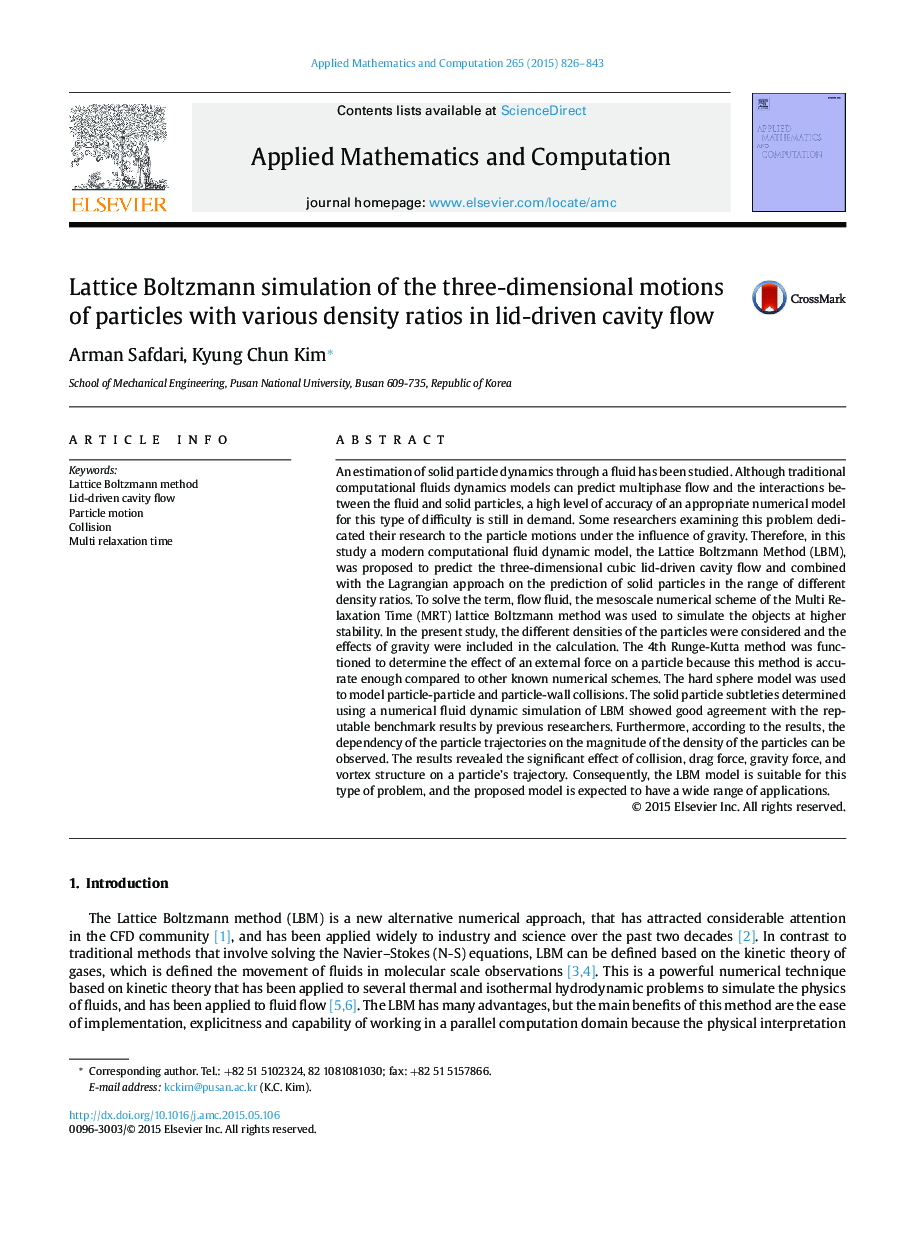| Article ID | Journal | Published Year | Pages | File Type |
|---|---|---|---|---|
| 4626697 | Applied Mathematics and Computation | 2015 | 18 Pages |
An estimation of solid particle dynamics through a fluid has been studied. Although traditional computational fluids dynamics models can predict multiphase flow and the interactions between the fluid and solid particles, a high level of accuracy of an appropriate numerical model for this type of difficulty is still in demand. Some researchers examining this problem dedicated their research to the particle motions under the influence of gravity. Therefore, in this study a modern computational fluid dynamic model, the Lattice Boltzmann Method (LBM), was proposed to predict the three-dimensional cubic lid-driven cavity flow and combined with the Lagrangian approach on the prediction of solid particles in the range of different density ratios. To solve the term, flow fluid, the mesoscale numerical scheme of the Multi Relaxation Time (MRT) lattice Boltzmann method was used to simulate the objects at higher stability. In the present study, the different densities of the particles were considered and the effects of gravity were included in the calculation. The 4th Runge-Kutta method was functioned to determine the effect of an external force on a particle because this method is accurate enough compared to other known numerical schemes. The hard sphere model was used to model particle-particle and particle-wall collisions. The solid particle subtleties determined using a numerical fluid dynamic simulation of LBM showed good agreement with the reputable benchmark results by previous researchers. Furthermore, according to the results, the dependency of the particle trajectories on the magnitude of the density of the particles can be observed. The results revealed the significant effect of collision, drag force, gravity force, and vortex structure on a particle's trajectory. Consequently, the LBM model is suitable for this type of problem, and the proposed model is expected to have a wide range of applications.
